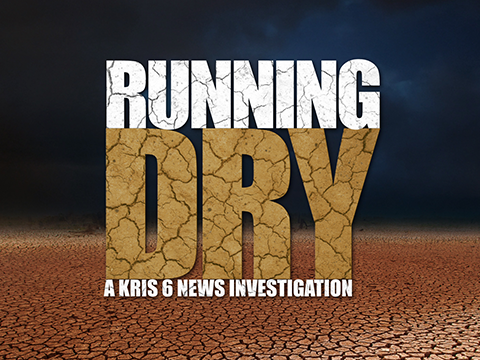- Padre Island National Seashore (PINS) new partnership with Texas A&M Corpus Christi's Lone Star Drone Program
- Will allow federally permitted drones to fly above PINS
- More extensive environmental research through drones
Padre Island National Seashore (PINS) recently established a partnership with Texas A&M University-Corpus Christi’s Lone Star Unmanned Aircraft System Center of Excellence and Innovation (LSUASC) where they are federally permitted to fly drones over PINS to conduct extensive environmental research.
LSUASC received a scientific collection and research grant from the federal govenment which will allow them to help and monitor in the rescue of cold-stunned turtles, mapping beach erosion and can support the monitoring of other species of wildlife in the future. In addition, the drones will be able to conduct mapping of the tidal areas along the Laguna Madre and grassland areas on the island.

“Part of what this permit will be doing is working with cold stunned turtles. So, that further helps support our turtle program here at the national seashore," Kelly Taylor, PINS Public Information Officer said.
LSUASC is one of the first drone programs to work with the National Park Service.
"What we’ve done over the past year is kind of focus with the National Park Service on how to partner with them, how to actually fly out here, how to and whether its mapping, public safety operations, search and rescue, wildlife management, beach erosion, all of those things," Tye Payne, LSUASC Assistant Director for Operations, Test, and Evaluations said.
While LSUASC is allowed to fly drones above PINS, other people are not allowed to recreationally fly drones in any national park.

“Even though we have issued a permit to Lone Star to do specific research with their drones, drones are not permitted in national parks without a special permit. So that means that the drone hobbyists can’t just show up and fly their drone in the park," Taylor said.
The drone work will also allow extensive environmental research to be done more efficiently.
“There’s so much that can be done with a drone that it takes a drone to do it with just one, I mean obviously there's more than one person, but instead of having ten pairs of boots on the ground, we have a drone, and it’s covering a lot more ground than ten people could do in a day. So, lots of applications, very exciting," Taylor said.
The overall goal of this new partnership is to help the community understand more about the environment.
“Everything we do here is to help the community or to better the community in some way," Payne said. "Whether it's the community we live in here in South Texas and the Gulf Coast, whether it’s the state of Texas, and eventually the nation. Everything we’re looking into in some way now, short term future, long term future, it’s going to help them.”
For the latest local news updates, click here, or download the KRIS 6 News App.





